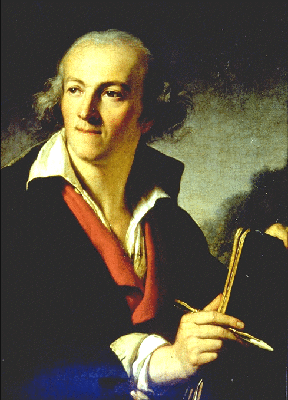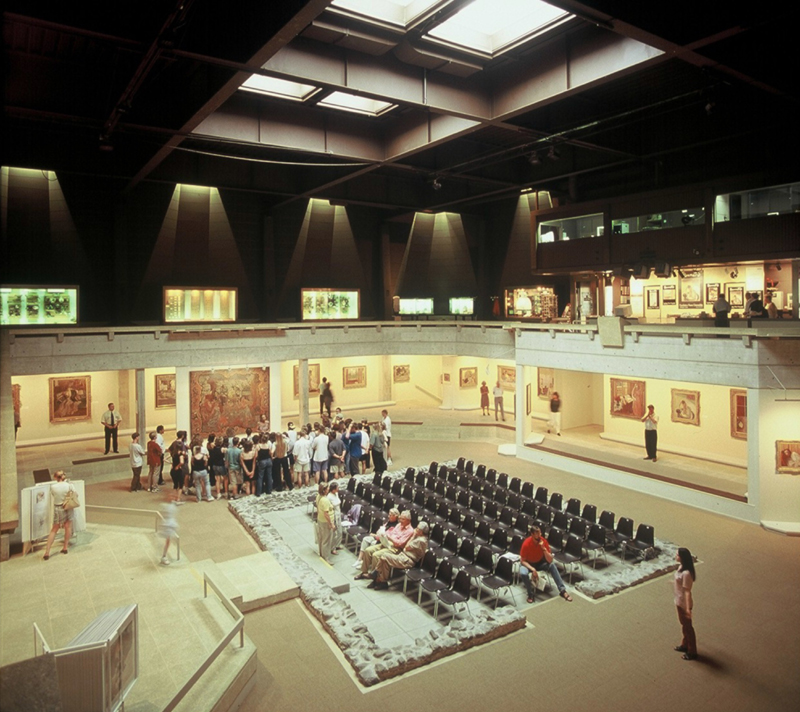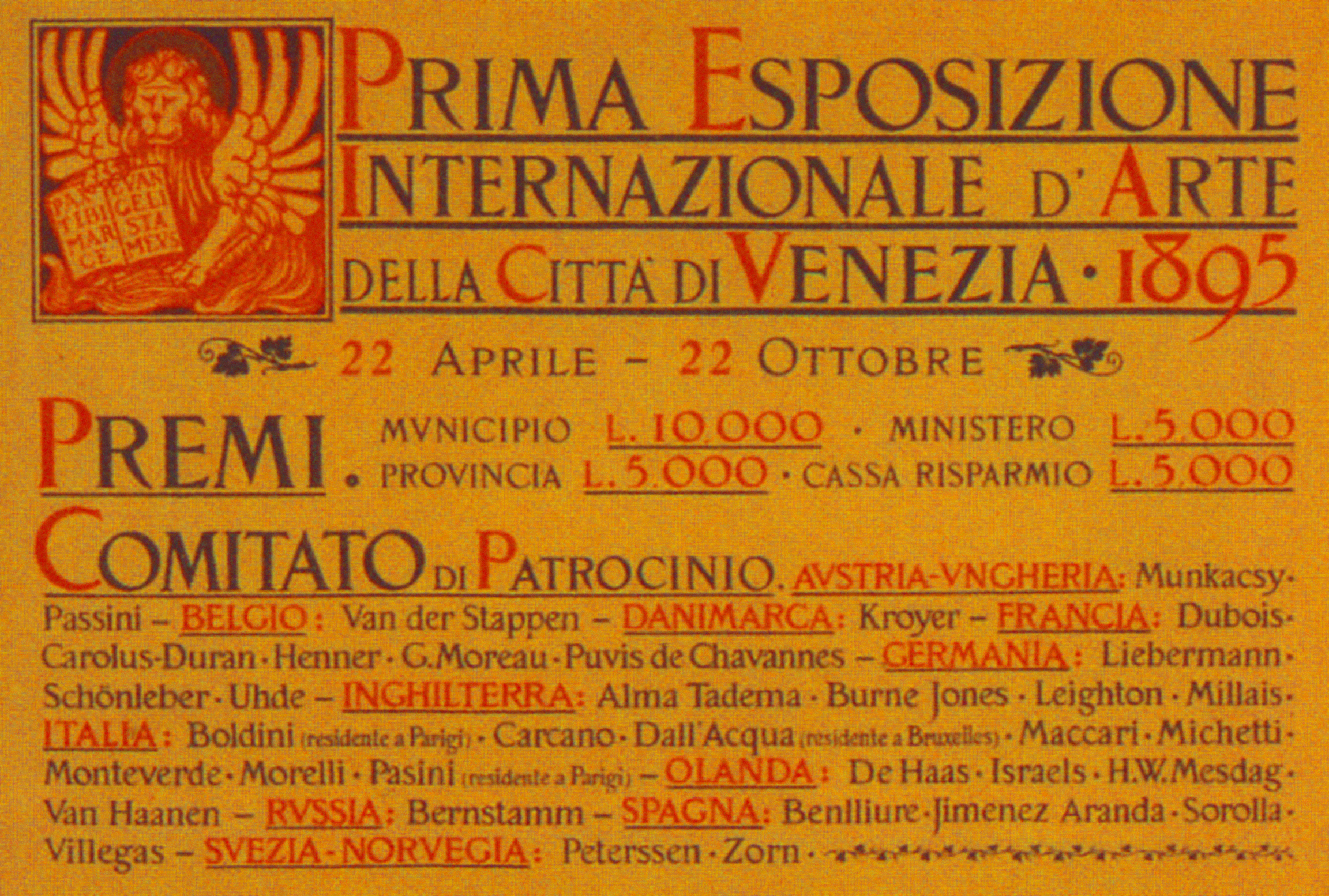|
Étienne Martin
Étienne Martin (4 February 1913 – 21 March 1995) was a French non-figurative sculptor. Biography He was born Henri Étienne-Martin on 4 February 1913 in Loriol, Drôme, France. He attended the Ecole des Beaux Arts de Lyon from 1929 to 1933, where he met Marcel Michaud. Martin moved to Paris in 1934, working at the studio of Charles Malfray at the Académie Ranson, where he came into contact with such painters as Roger Bissière, Jean Le Moal, Jean Bertholle, Alfred Manessier, Zelman, Véra Pagava, and the sculptor François Stahly. With them, Martin became part of the group '' Témoignage'', which had exhibitions in Paris in 1938 and 1939. He worked primarily in wood and plaster, creating works inspired by his childhood memories of his home in Loriol. Later sculpture included bronze, string, and textiles. During World War II, Martin was a prisoner in Germany and was liberated in 1941. In 1942, he traveled to Oppède with Stahly and Zelman, and then in 1943–1944 wen ... [...More Info...] [...Related Items...] OR: [Wikipedia] [Google] [Baidu] |
Loriol-sur-Drôme
Loriol-sur-Drôme (, literally ''Loriol on Drôme''; Vivaro-Alpine: ''L’Auriòu de Droma'') is a commune in the Drôme department in southeastern France. Loriol is situated in the Rhône valley, between Valence and Montélimar. The neighbouring villages are Livron-sur-Drôme, Mirmande, and Cliousclat. History Roman emperor Aurelian is said to have based a camp here. The medieval fortress was destroyed in the wars of religion, leaving only the ramparts. During World War II, Loriol was heavily damaged by Allied bombing in August 1944. Population See also *Communes of the Drôme department A commune is an alternative term for an intentional community. Commune or comună or comune or other derivations may also refer to: Administrative-territorial entities * Commune (administrative division), a municipality or township ** List of comm ... References Communes of Drôme {{Drôme-geo-stub ... [...More Info...] [...Related Items...] OR: [Wikipedia] [Google] [Baidu] |
Henri-Pierre Roché
Henri-Pierre Roché (28 May 1879 – 9 April 1959) was a French author who was involved with the artistic avant-garde in Paris and the Dada movement. Late in life, Roché published two novels. The first was ''Jules et Jim'' (1953), a semi-autobiographical work published when he was 74. His second novel, ''Deux Anglaises et le continent'' (Two English Girls, 1956), also was inspired by his life. Both were adapted as films by the director François Truffaut, in 1962 and 1971 respectively. The popularity of the film '' Jules and Jim'' brought renewed attention to Roché's novels and life. Biography Roché was born in Paris, France. In 1898, he was an art student at the Académie Julian. Roché became a journalist as well as an art collector and dealer. At the turn of the 20th century, he became close friends with young European artists in the Montparnasse Quarter of Paris, including Manuel Ortiz de Zárate and Marie Vassilieff; and from Montmartre, Max Jacob and Pablo Picasso. ... [...More Info...] [...Related Items...] OR: [Wikipedia] [Google] [Baidu] |
Museum Of Grenoble
The Museum of Grenoble () is a municipal museum of Fine Arts and antiquities in the city of Grenoble in the Isère region of France. Located on the left bank of the Isère River, place Lavalette, it is known both for its collections of ancient art and for its collections of modern and contemporary art. Thanks to the action of Andry-Farcy, one of its curators in the interwar period, it is considered the very best museum of modern art in France. Its temporary rooms allow it to organize two exhibitions each year. History The Museum of Grenoble was founded on 16 February 1798 by Louis-Joseph Jay, well before other French provincial museums. That day, an order of the local administration detailed the creation of a ''museum'' in Grenoble, in which article 10 stipulated that « the citizen Louis-Joseph Jay is appointed curator of this museum. » In May of that year, the Interior Minister canceled the creation of the museum but a provisional authorization was obtained in December, ... [...More Info...] [...Related Items...] OR: [Wikipedia] [Google] [Baidu] |
Martigny
Martigny (; , ; ) is the capital city of the district of Martigny (district), Martigny, cantons of Switzerland, canton of Canton of Valais, Valais, Switzerland. It lies at an elevation of , and its population is approximately 20,000 inhabitants (''Martignerains'' or "Octoduriens"). It is a junction of roads joining Italy, France and Switzerland. One road links it over the Great St. Bernard Pass to Aosta (Italy), and the other over the col de la Forclaz to Chamonix (France). In winter, Martigny is known for its numerous nearby Alp ski resorts such as Verbier. Geography Martigny lies at an elevation of , about south-southeast of Montreux. It is on the left foothills of the steep hillsides of the Rhone Valley, at the foot of the Swiss Alps, and is located at the point where the southwestern-flowing Rhone turns ninety degrees northward and heads toward Lake Geneva. The river La Drance flows from the southern Valais Alps (Wallis) through Martigny and joins the Rhone from the left just ... [...More Info...] [...Related Items...] OR: [Wikipedia] [Google] [Baidu] |
Fondation Pierre Gianadda
Fondation Pierre Gianadda, inaugurated in 1978, administers museums and exhibitions located in Martigny, Switzerland. The permanent exhibitions include the Automobile Museum, Gallo-Roman Gallo-Roman culture was a consequence of the Romanization (cultural), Romanization of Gauls under the rule of the Roman Empire in Roman Gaul. It was characterized by the Gaulish adoption or adaptation of Roman culture, Roman culture, language ... Museum, Louis and Evelyn Franck Collection, Sculpture Park, and Chagall Court. History The Foundation was founded by Léonard Gianadda in memory of his younger brother Pierre, who was killed in an airplane crash in 1976. External links * * Art museums and galleries in Switzerland Martigny Museums in Valais Transport museums in Switzerland Automotive museums Museums of ancient Rome in Switzerland Sculpture gardens, trails and parks in Europe {{Switzerland-museum-stub ... [...More Info...] [...Related Items...] OR: [Wikipedia] [Google] [Baidu] |
Pompidou Center
The Centre Pompidou (), more fully the (), also known as the Pompidou Centre in English and colloquially as Beaubourg, is a building complex in Paris, France. It was designed in the style of high-tech architecture by the architectural team of Richard Rogers, Su Rogers and Renzo Piano, along with Gianfranco Franchini. It is named after Georges Pompidou, the President of France from 1969 to 1974 who commissioned the building, and was officially opened on 31 January 1977 by President Valéry Giscard d'Estaing. Centre Pompidou is located in the Beaubourg area of the 4th arrondissement of Paris. It houses the (BPI; Public Information Library), a vast public library; the , the largest museum for modern art in Europe; and IRCAM, a centre for music and acoustic research. The Place Georges Pompidou is an open plaza in front of the museum. The Centre Pompidou will be closed for renovation from 2 March 2025 until 2030. The BPI will be temporarily relocated to its Lumière build ... [...More Info...] [...Related Items...] OR: [Wikipedia] [Google] [Baidu] |
Académie Des Beaux-arts (France)
An academy (Attic Greek: Ἀκαδήμεια; Koine Greek Ἀκαδημία) is an institution of tertiary education. The name traces back to Plato's school of philosophy, founded approximately 386 BC at Akademia, a sanctuary of Athena, the goddess of wisdom and Skills, skill, north of Ancient Athens, Athens, Greece. The Royal Spanish Academy defines academy as scientific, literary or artistic society established with public authority and as a teaching establishment, public or private, of a professional, artistic, technical or simply practical nature. Etymology The word comes from the ''Academy'' in ancient Greece, which derives from the Athenian hero, ''Akademos''. Outside the city walls of Athens, the Gymnasium (ancient Greece), gymnasium was made famous by Plato as a center of learning. The sacred space, dedicated to the goddess of wisdom, Athena, had formerly been an olive Grove (nature), grove, hence the expression "the groves of Academe". In these gardens, the philos ... [...More Info...] [...Related Items...] OR: [Wikipedia] [Google] [Baidu] |
École Nationale Supérieure Des Beaux-Arts
École or Ecole may refer to: * an elementary school in the French educational stages normally followed by secondary education establishments (collège and lycée) * École (river), a tributary of the Seine The Seine ( , ) is a river in northern France. Its drainage basin is in the Paris Basin (a geological relative lowland) covering most of northern France. It rises at Source-Seine, northwest of Dijon in northeastern France in the Langres plat ... flowing in région Île-de-France * École, Savoie, a French commune * École-Valentin, a French commune in the Doubs département * Grandes écoles, higher education establishments in France * The École, a French-American bilingual school in New York City * Ecole Software, a Japanese video-games developer/publisher {{disambiguation, geo ... [...More Info...] [...Related Items...] OR: [Wikipedia] [Google] [Baidu] |
Venice Biennale
The Venice Biennale ( ; ) is an international cultural exhibition hosted annually in Venice, Italy. There are two main components of the festival, known as the Art Biennale () and the Venice Biennale of Architecture, Architecture Biennale (), which are held in alternating years (hence the name). There are also four additional components, each usually held on an annual basis, comprising , , Venice Film Festival, and Venice Dance Biennale. Between them they cover contemporary art, architecture, music, theatre, film, and contemporary dance. The main exhibition is held in Castello, Venice, Castello and has around 30 permanent pavilions built by different countries. The Biennale has been organised every year since 1895, which makes it the oldest of its kind. Since 2021, the Art Biennale has taken place in even years and the Architecture Biennale in odd years. History 1895–1947 On 19 April 1893, the Venetian City Council passed a resolution to set up an biennial exhibition of I ... [...More Info...] [...Related Items...] OR: [Wikipedia] [Google] [Baidu] |
Taoism
Taoism or Daoism (, ) is a diverse philosophical and religious tradition indigenous to China, emphasizing harmony with the Tao ( zh, p=dà o, w=tao4). With a range of meaning in Chinese philosophy, translations of Tao include 'way', 'road', 'path', or 'technique', generally understood in the Taoist sense as an enigmatic process of transformation Ultimate reality, ultimately underlying reality. Taoist thought has informed the development of various practices within the Taoist tradition and beyond, including forms of Taoist meditation, meditation, Chinese astrology, astrology, qigong, feng shui, and Neidan, internal alchemy. A common goal of Taoist practice is self-cultivation, a deeper appreciation of the Tao, and more harmonious existence. Taoist ethics vary, but generally emphasize such virtues as ''wu wei, effortless action'', ziran, ''naturalness'', ''pu (Taoism), simplicity'', and the Three Treasures (Taoism), three treasures of compassion, frugality, and humility. The co ... [...More Info...] [...Related Items...] OR: [Wikipedia] [Google] [Baidu] |
Gurdjieff
George Ivanovich Gurdjieff ( – 29 October 1949) was a philosopher, mystic, spiritual teacher, composer, and movements teacher. Born in the Russian Empire, he briefly became a citizen of the First Republic of Armenia after its formation in 1918, but fled the impending Red Army invasion of Armenia in 1920, which rendered him stateless. In the early 1920s, he applied for British citizenship, but his application was denied. He then settled in France, where he lived and taught for the rest of his life. Gurdjieff taught that people are not conscious of themselves and thus live their lives in a state of hypnotic "waking sleep", but that it is possible to awaken to a higher state of consciousness and serve our purpose as human beings. His student P. D. Ouspensky referred to Gurdjieff's teachings as the "Fourth Way". Gurdjieff's teaching has inspired the formation of many groups around the world. After his death in 1949, the Gurdjieff Foundation in Paris was established and led b ... [...More Info...] [...Related Items...] OR: [Wikipedia] [Google] [Baidu] |







